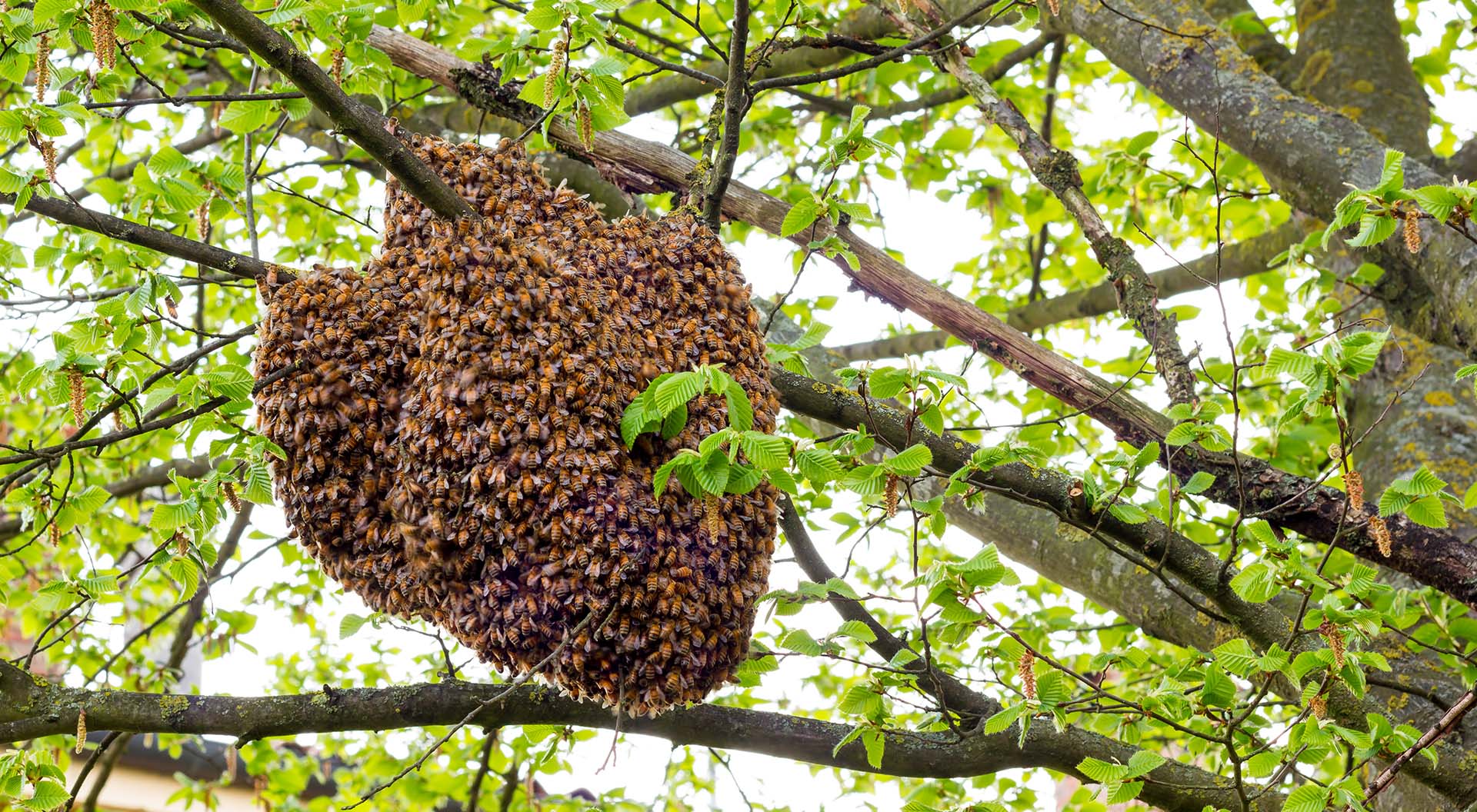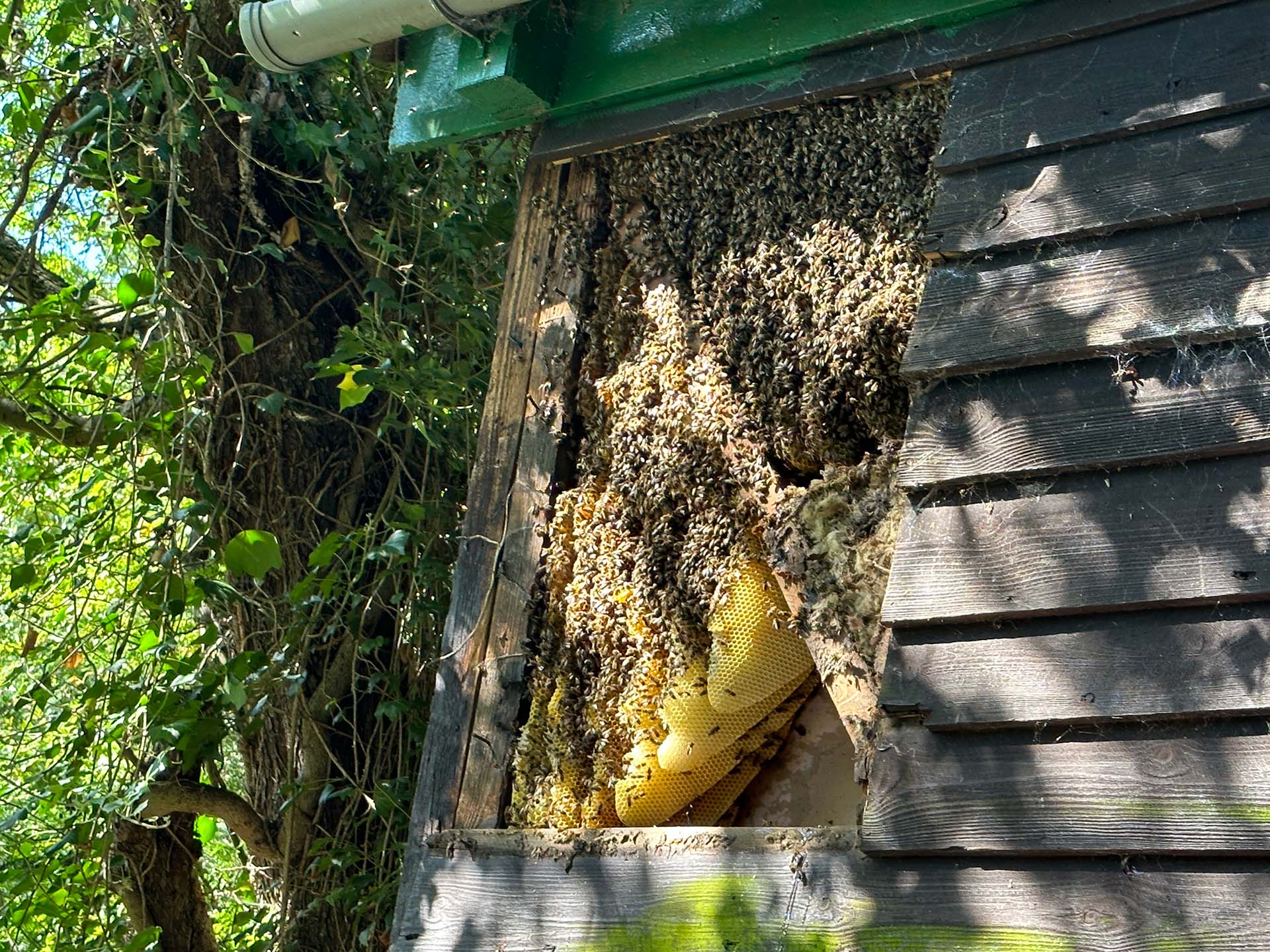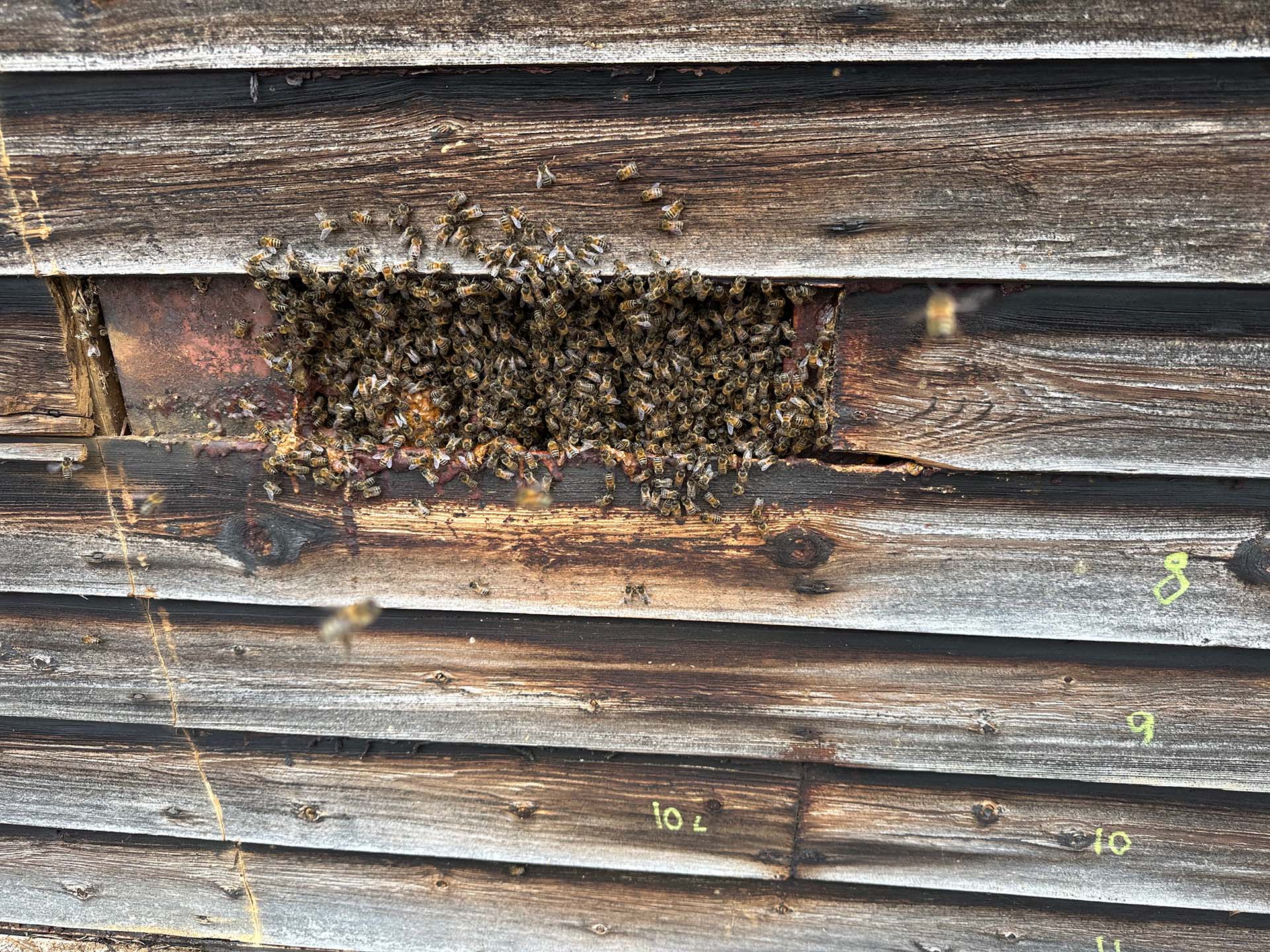Bees In Buildings
During the Spring and Summer each year we receive a huge number of enquiries regarding bees in buildings as we have specialised in working with bees.
Most enquiries are about Honeybees, but some are about Bumble bees or other types of bees. We should make clear from the outset, for several reasons we do not advocate eradication of any bee colony.
Bumblebees
The advice we give regarding Bumble bees is pretty straightforward in that we encourage people to live with them wherever possible, for the short time they will be present. However, if a bumblebee nest is in a location that is causing a problem for occupants of a property, and if the nest is accessible, we may be able to relocate them. More information on Bumblebees can be found at: www.bumblebeeconservation.org
Honeybees
With regard to Honeybees, the advice we give is a lot more complex, primarily because unlike Bumblebees, Honeybees are not annual colony formers, and once present in a building, will usually remain there permanently.
Between April and July each year (approximately) every colony of Honeybees will normally split in half at least once (sometimes two or more times). Half the colony remains where it is to carry on, whilst the other half (usually between 15,000 and 25,000 bees) departs as a swarm to set up a new colony. This is the Honeybee’s natural way of reproduction. The swarm will appear out of their current location as a big dark buzzing cloud, and will settle somewhere in a cluster, while scout bees go off to look for somewhere new to make their home. This is usually somewhere with a small entrance and a cavity of a suitable size behind this, and can often be in a wall, roof, chimney, or other location in a building. Equally, it could be in a cavity in a tree, which would be the honeybee’s natural habitat.
Once the scout bees identify a suitable location to set up their new home, they bring the rest of the swarm along and all bees will rapidly enter into the cavity they have identified as their new home. You may see them arrive as a big dark cloud! Once inside they will very quickly start to draw out comb (a beeswax framework with small hexagonal shaped cells, that are then rapidly filled with pollen and nectar, and which the queen will start laying eggs in too.
There is a small chance that the bees might move on within the first 24-36 hours or so, simply because they decide the location is not for them. Additionally, if we can attend in this time, there is a chance we may be able to encourage the bees to move on (this is known as a ‘forced abscond’), although this is not guaranteed. After this time, the bee colony will generally remain permanently, and a live removal is really the only option to remove them.

Important Steps to Take If You See a Honeybee Swarm:
The worst advice for Honeybee swarms is to just leave them and let them move on. This could result in the bees moving into someone’s home, at best potentially causing significant inconvenience, and at worst, with them ending up with a big bill for removal.
If you see a Honeybee swarm settle anywhere (such as on a fencepost, tree branch or other location), avoid going near them and quickly contact the nearest Honeybee swarm collector. Contact details for local beekeepers who collect swarms can be found at:
https://www.bbka.org.uk/find-a-local-swarm-collector
If a swarm can be collected, it may just prevent it moving into someone’s property.
What to do if you have Honeybees in your building:
If the bees have just arrived:
If you know the bees have only just entered your building in the previous 24 hours or so, please contact us urgently. Whilst we are extremely busy during bee swarming season, we will endeavour to visit and see if we can encourage the bees out using non-intrusive methods. We will usually ask for some evidence of when the bees arrived (such as video etc if possible).
If the bees have been present for a few days or longer:
If the bees have been present in your building for a few days, or longer, we will still be able to help, but removal of an established honeybee colony is a significant undertaking, involving opening up the fabric of the building (from inside or out), to expose the full extent of the colony and all comb. This is known as a ‘live bee removal’ or ‘cut-out’.
This situation requires a full survey to identify the most effective (and safe) method of accessing the bees. As you might imagine, this work is complex and as with most complex work, it often involves a fairly significant cost, particularly where scaffold access and building works are required. After the survey is completed, we will then draft a written proposal and quote for you to consider. Cut-outs can often take a number of weeks to plan.

Bees In Buildings
Just to give you an idea of how much comb Honeybees create, an established colony will draw out approximately one foot in depth of comb, across the diameter of an average chimney flue, for each year they are present. So leaving honeybees in a building might be considered as storing up a larger problem for the future. Having said that, some people live with honeybees in their buildings for many years with no particular issue. The key risks in leaving bees in a building include:
- When the bees swarm each year there is a risk the swarm may end up entering another location in the same building or in a neighbouring building.
- The temperament of a colony can change throughout the year, so a placid colony may become more feisty, posing a potential risk of stings to anyone in the vicinity.
- You may find that any other tradespeople may refuse to carry out work on your property if they will need to be working near the location of the bees.
- Comb can also collapse down chimneys or in other locations where ambient temperatures can become excessively high, causing an awful mess of melted wax, honey and bees.
- Beeswax has a melting point of 62-64oC and a flashpoint of 204o It is for this reason, we never recommend lighting a fire to try and move bees out of a chimney, if they have been there for more than a very short time.
We offer bee removal services for homes and commercial premises in Northampton, Daventry, Rugby, Market Harborough, Towcester, Brackley, Wellingborough, Kettering, Corby, Olney and surrounding areas. Our team of specialists are available both evenings and weekends at no extra cost. Should you require assistance call us on 01604 328545, email [email protected] or use our simple contact form.

